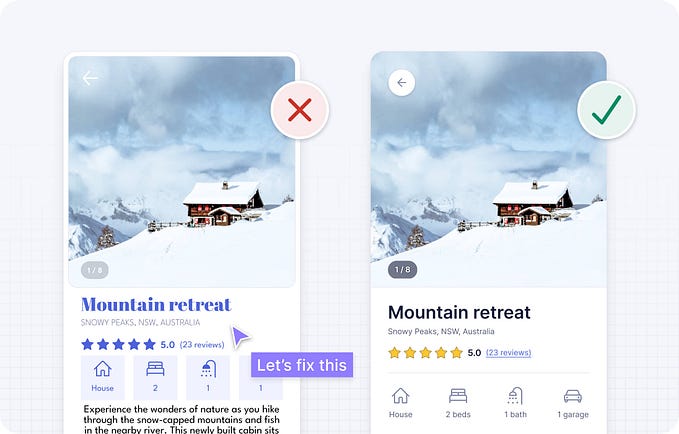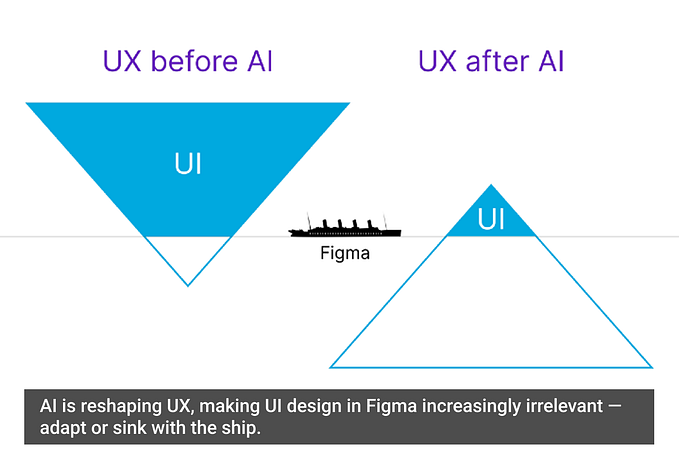How Designers Measure Success (Part II)

The subject matter for this article complements the previous one, where the focus was the clarification of what it means to measure success in terms of project accomplishment/process definition, and what are the implications for the Design practice in general, and designers in particular. This article, in particular, is a continuation of that topic, but now focusing on how Designers measure their own personal success, in terms of career path/projection, evolution, and sustainability. This is a topic that I’ve had quite a few Designers, professionals coming from different backgrounds, surveys from several institutions and even students ask me about throughout the years. As is the usual tactic in my articles, I’ll reference my own personal experience, and what I’ve observed during my 18 years in the Design Industry, to hopefully extrapolate some useful findings that can be of use.
How do Designers Measure Success? One of the most common questions I get asked, besides the default one of “how do I start a career in Design” is the, “how do I continue to evolve my career, how do I get momentum to ascend to a different level”. The Design field and design affiliated careers have shifted quite a bit in the past two decades, particularly since the flourishing of Web Products in the early 2000s, and subsequent Mobile Applications, AI/VR technologies which have appeared more recently. Many designers in the past started their paths in this field through their academic studies in Graphic Design, and excelled in their careers as Art Directors, Creative Directors, both in Design Agencies, but also in-house as part of different organizations. 15 years ago the general terrain in the Design Profession for many designers I knew, including some I taught, was typically shaped by an education which lacked a background in Interactive/Human Centered Design methodologies. As Web Products became more prevailing, and the demand for professionals who understood this medium increased, the Design field itself started shifting, and new roles started to appear, with the most common designations being Interactive Designer, Interactive Art Director, Information Architect, Researcher and the one I personally always disliked, Web Designer. The path for these designers also became an interesting one, punctuated with an exclusive focus on Interactive Products, which in turn allowed some of these professionals to become Digital Directors, and other similarly titled roles, which meant in Design Agencies and some Organizations, there was in effect a division of the creative direction for projects in “traditional creative” (meaning, graphic design related, publishing, branding), versus the “digital creative” (web products, kiosks, DVDs, motion graphics, to name but a few). Of course, since then the Design field has continued to shift and evolve, and many of the terms that had been coined years and years ago, became trendier and the roles and designations associated with them shifted once again, now with the inclusion of titles such as UI Designer, UI/UX Designer, Design Researcher, UX Manager, UX Director, UX Creative Director, Product Designer, User Experience Lead, and the list goes on and on. The reason why I’m painting this canvas is primarily to shed some light on facts that I have personally observed throughout the years. I’ll point them out succinctly in the points below.
1. Training lacks pertinence and relevance. Many Design programs in Institutes excel at teaching their students the foundations of Graphic Design and enabling students to find their points of view and understand (poorly) some of the tools that enable them to accomplish their tasks. In the Interactive field, the lack of substantial training is also somewhat evident. Students learn the terminology, buzzwords, expressions, that indicate their exposure to the Interactive World in particular and the Design Thinking process in general, but the depth of knowledge is still somewhat shallow.
2. Continuous education and improvement. It’s fundamental for Designers to keep harnessing skills and knowledge as their career evolves. I’m not stating that every designer should become a generalist. Everyone has an opportunity to specialize in a certain field, and excel in that particular field. What I’m saying is that a well-rounded design professional does not work in a bubble of self-importance and self-sustenance. Designers should understand the intricacies of what surrounds them, which means in terms of creative and organizations, understand development, project management, research, business requirements, market fluctuations, and the list goes on and on. Designers are catalysts, which means a designer is only as effective as much as you can understand the pulse of what reality is providing and where it’s headed. Seeking, reading, continuously educating, is crucial for the sustainability of the profession.
3. Communicate, showcase and develop. Designers have to be able to communicate how they approach problems, how they relate to teams, how they collaborate in order to achieve common goals within an organization. All of these topics and many others are fundamental on how Designers present themselves and ultimately, how they build a consistent brand (please check my article on “Portfolios and the Art of Communicating” ).

Statements. The previous segment of the article gave a brief insight into the somewhat typical evolution of Design professions in the last 20 years and some of the observations I’ve witnessed from experiencing the ebbs and flows of that field. However, in more recent years I’ve noticed something quite dramatic in terms of the Design/Technology market and the professionals in it. The thirst and need for Design professionals in the Product Experience/Design Thinking world, has in effect created a strain in the market, something that is also noticeable in the mechanics of compensation across the board. I should preface the remainder of this section, by stating that personally, I believe this evolution of the Design Discipline to be truly commendable. Also, it’s fantastic that Design professionals are duly compensated in the current market, and all of those elements are a testament to the visibility of everyone’s efforts, and how the discipline has gained credibility and sustainability within and for Organizations. However, something that is to be considered and discussed is exactly how experience, career projection, a body of work, impact career paths and visibility, in a discipline that is constantly shifting. Some of the questions I get (through Linkedin and from past students) are usually tied with the following topics: do Designers measure their own success by a title, by a compensation package, by awards, or all of the above. How does experience play a part in enabling designers to move to leadership roles, and how is it possible for designers with 3 years of experience be Directors of Design, among others. Here are some of my observations and statements in regards to those same questions, which also tie with the goal of this article.
Job titles. These are as important and meaningful as a professional want them to be, which is a convoluted way of me saying that, titles are indeed of importance, since they typically demonstrate that a professional has evolved throughout a career, and that the combination of experience, expertise, education, communication, and other factors (which can include being a relevant voice in the field, including publications, patents, and yes, even awards, but also being able to showcase products which are part of a portfolio and that have been shipped to market and played a significant role in an organization’s success, or even disruptive projects for a particular industry, and the list goes on) has enabled that person to reach that position. Titles can however lack the subtlety to really demonstrate the breadth of knowledge and experience a professional brings to a role, which is why I typically answer professionals who want to progress to other roles and/or levels, to understand what the role is truly about, and if it indeed summarizes what their input/perspective is about.
Experience. I usually like to say that experience can be divided into the following brackets: Qualitative and Quantitative experience. Quantitative experience is associated with scenarios where professionals have been in the field for a lengthy period of time and therefore have amassed a considerable amount of expertise for being exposed to projects and particular demands for a considerable amount of time. This type of experience can advocate for the natural transition of these professionals to roles where their points of view, experience, and holistic views can be more effectively leveraged. However, this experience in no way equates or is synonymous with quality of work or insight. Qualitative experience is typically associated with professionals being exposed to a wide variety of industries, products/projects, and ultimately being able to communicate and understand not only what is currently occurring, but what lies ahead. This experience, much like the previous, is not synonymous with quality of work or insight, with this type of experience sometimes being borderline showmanship or crafty sales pitches. Experience in Design and Technology (and Innovation) for a Professional is ultimately the ability to marry maturity, in which the professional understands the path that led him/her to this point in time, with self awareness, insight, focus, and ultimately adaptability, in order to fully embrace challenges, continuously learn from your peers and impact not only yourself, but hopefully the Organization in which you exist, and ultimately the society in which we all live in. And this is the realization that usually transpires and cements itself the more you work in the field, observe its evolution and that also shapes who we are as professionals.
Levels, Compensation. As careers evolve, and professionals gain more awareness, that also implies being able to understand their value on the market and how job markets function. Going into compensation levels falls outside of the scope of this article, but I’ll leave this as part of my observations. Compensation and career levels should be a testament to all the factors that I’ve itemized before, namely Experience, Insight, Communication, to name but a few, and be fair/relevant to the job market, a geographical area in which professionals operate. When a Design professional, independently of their career level goes into an interview process or considers a new opportunity, it’s ultimately up to him/her, to be adequately prepared, well informed to be able to make informed decisions of where that needs to be, accounting for all those factors.
Conclusion. I’ll conclude with the following quote, from Carl Jung on the topic of self-awareness, which is very much on point with this article:
“Your visions will become clear only when you can look into your own heart. Who looks outside, dreams; who looks inside, awakes.”








